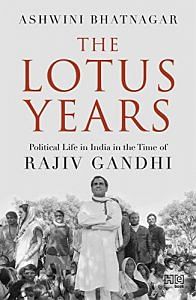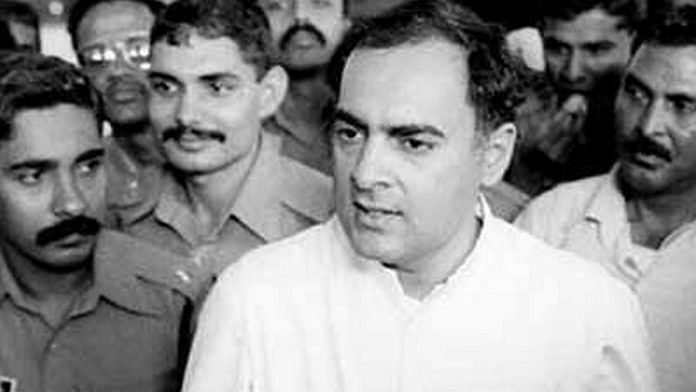Both Nehru and Indira, during their innings in power, had gone out of their way to appease Sheikh Abdullah by accommodating his demands for special status to the state. They had hoped the ‘nationalist’ Sheikh would ensure the seamless integration of the region into mainstream polity. But on each occasion, their expectation had been belied. First Nehru, and then Indira, had to extern the Lion of Kashmir from his den to contain his anti-Centre tirade.
The family relationship though had persisted in fits and starts. Rajiv and Farooq had virtually grown up together. Whenever the Nehru–Gandhi family was in Kashmir, whether on vacation or 238 The Lotus Years a short tour, the Abdullah family was always available to them. Rajiv, therefore, knew Farooq well and, in fact, quite liked the ebullient Abdullah scion, who had studied medicine and then moved to the UK to practice. He had also married a British girl, Molly, and seemed like a modern liberal at heart.
Farooq initially had no interest in politics. But with his father’s failing health, he took the plunge into dynastic politics. In 1980, about the same time as Rajiv was starting out in his political career, Farooq contested his first Lok Sabha election and won unopposed. A year later, in August 1981, he was appointed the president of the National Conference (NC) by his father and, when Sheikh Abdullah died on 8 September 1982, he succeeded him as the chief minister. Rajiv called to congratulate him on both the occasions.
Rajiv was sure he could trust Farooq to end the impasse in Kashmir, and integrate the state into the Indian polity. He believed the nitty-gritty of power sharing would not stand in the way of their overall vision of Kashmir being the showpiece of his politics of constructive accords – a policy of give and take in the larger interest of nation building.
Rajiv’s belief, however, ran contrary to the feedback on Farooq’s first brush with administering the restive state. His performance had been far from spectacular. In fact, there were verified reports that Farooq had a cavalier attitude towards his responsibilities. The disenchantment with his potential was to such an extent that his elder sister’s husband, G.M. Shah, had plotted his ouster from power. And, with a little help from the Congress, he garnered enough defectors from the party to form his own government on 2 July 1984. Senior Congress leader Mufti Mohammad Sayeed had played an important role in the formation of the new government.
Also read: Nehru was pursuing a Kashmir solution with Pakistani support, but Cold War came in the way
But these political shenanigans had happened during Indira Gandhi’s time. Rajiv had a different view on Farooq and the Congress leadership in the state when he came to power in 1985.
He was aware that the Congress’s old guard in the state had its own ambitions and their own sub-regional politics. This was part of the reason that the waters of the Jhelum were muddied time and again at the cost of political stability in Srinagar. Rajiv wanted to move away from it and get his own man in – a man who shared his vision of politics aligned with the idyllic setting of the ‘paradise on earth’. Farooq’s persuasive ways convinced him that he was the go-getter that Kashmir so desperately needed.
Mufti Sayeed’s own actions were also proving to be his undoing. Shortly after the locks were opened in Ayodhya in February 1986, he allegedly engineered attacks on Hindus in his home district of Anantnag. It was the only location where violence against Hindus and their shrines had taken place in the otherwise peaceful Valley. It was reported to Rajiv that Mufti Sayeed had instigated the violence as he was keen to be chief minister. G.M. Shah had served long enough.
On 7 March 1986, Rajiv had Shah sacked and imposed Governor’s Rule on the state. He shifted Mufti Sayeed to Delhi, gave him a seat in the Rajya Sabha and also made him the Union minister of Tourism. In November 1986, after months of hectic parleys, Rajiv and Farooq signed an accord that reinstated the latter as chief minister and proposed a roadmap for stabilizing the state. Many senior Congress members in the state, including Mufti Sayeed and Arun Nehru, were opposed to Farooq’s reentry. Arun Nehru was moved out of discussions on Kashmir, and besides Mufti Sayeed, even the old family confidante and Kashmiri politician M.L. Fotedar was kept out of the loop.
Negotiations with Farooq were either directly conducted by Rajiv or through his loyalist Union Surface Transport minister, Rajesh Pilot. Rajesh was a new MP who had served as an Air Force fighter pilot. After coming into contact with Sanjay and Indira Gandhi, he had dropped his surname Prasad and added Pilot to it, in order to identify himself more closely with the Gandhi family’s love for flying. With his infectious laughter and shrewd sense of discretion, Pilot soon moved from being an important aide on Sanjay’s, and then Indira Gandhi’s, radar to Rajiv’s ace troubleshooter.
Even as a caretaker coalition government was being cobbled together, silent dissent was brewing in both the Congress and the National Conference. Sections in both parties were apprehensive about the secret goings-on. Soon after the announcement of the Rajiv–Farooq Accord amidst much fanfare, Farooq took the chief minister’s oath of offi ce alone. No other minister was sworn-in with him because the list of ministers was still in the making, with all sides indulging in intense lobbying. The council of ministers was however scheduled for swearing-in at 4.15 p.m. on 7 November.
After consultations in Srinagar with Governor Jagmohan and others, Rajesh Pilot fl ew on his last and final mission to Delhi on this day. Farooq had insisted that he would share his final list with the Congress only after he had seen the party’s list. Pilot had a fi nal round of discussions in Delhi and flew back to Srinagar the same afternoon.
While he was shuttling back and forth, Fotedar called him from Delhi to ask about the names on the list, but Pilot remained noncommittal in his response. But by 5.15 p.m., the cat was out of the bag and so incensed was Mufti Sayeed with the choices made that he left Raj Bhawan and did not return for the swearing-in. Another senior leader, Ghulam Rasool Kar, also left in a huff. It was obvious that the old Kashmir Congress lobby, which had held sway in the G.M. Shah government along with its backers at the Centre, had been dealt a severe blow.
Kar was a seasoned and effective politician, and Pilot had conveyed to Farooq that the Centre favoured his inclusion in the new cabinet. But Farooq was adamant. The new chief minister saw Kar as a master of intrigue. He was apprehensive that Kar would turn the tables on him as soon as he got an opportunity to The Kashmir Sabotage 241 do so. Farooq not only excluded his bête noire Kar, who was the kingpin in the Mufti Sayeed group, but added insult to injury by including Mir Lasjan from the rival Congress faction.
Mir was the PCC vice president, and was neither an MLA nor an MLC. He had recently written a lengthy confidential memorandum to the prime minister outlining the corruption charges against Mufti Sayeed. So, when he was given charge of the civil supplies and transport department, which had traditionally been the stronghold of the Mufti Sayeed group, it hit the seasoned Congress leader where it hurt the most.
Farooq also upturned settled heavyweights of his own party and instead brought in new faces into the cabinet. Party veterans, who had held powerful ministerial posts in the past, such as P.L. Handoo, Mohammad Shafi Qureshi, G. Rather, Bashir Kitchlew and even party general secretary Sheikh Nazir, were denied ministerial berths. Instead, newcomers like R.S. Chib, Abdul Salam Deva, etc., were brought in. Chib’s inclusion was significant. He was a former wing commander in the Indian Air Force, who had worked hard to obliterate the pro-Pakistan image that the NC had in the Hindu-dominated Jammu region.
But, the politics of backroom manipulation were not yet over. A game plan was worked out by unhappy Congress politicians in the state who had been bypassed in the ministerial appointments, as well as by certain members of the NC, who had not been taken into confidence by Farooq during his negotiations with Rajiv. The plan was to introduce a motion calling for a week-long session of the Assembly, during which time the dissidents would be able to gather enough votes to table a no-confidence motion against the new government. The move would effectively torpedo the Rajiv–Farooq Accord and ensure the continuance of the House with another dissidents-led government in power.
Also read: What Nehru wrote to Sardar Patel on Kashmir & its ‘oblivious’ Hindu Maharaja
The first move in this sabotage plan came minutes after the first cabinet meeting was officially convened in the presence of 242 The Lotus Years Governor Jagmohan. The meeting was planned as an informal affair, but one of the new Congress ministers, Master Beli Ram, quickly proposed that the Assembly be called into session for at least a week. The proposal unsettled Farooq. He, however, recovered quickly and whispered into the governor’s ear that if the Assembly wasn’t dissolved forthwith, the new accord was over. Jagmohan too understood the import of the proposal and quickly announced he was dissolving the State Assembly on the advice of the chief minister. Fresh elections, he added, would be held within six months. Farooq heaved a sigh of relief. He had come within a hair’s breadth of being ousted from power once again.
 This excerpt from The Lotus Years: Political Life in India in the Time of Rajiv Gandhi by Ashwini Bhatnagar has been published with permission from Hachette India.
This excerpt from The Lotus Years: Political Life in India in the Time of Rajiv Gandhi by Ashwini Bhatnagar has been published with permission from Hachette India.



